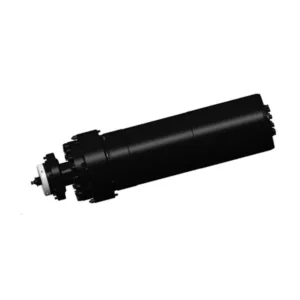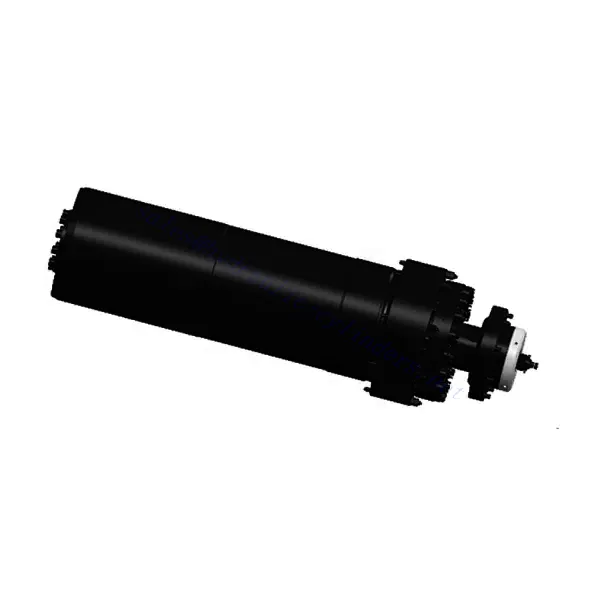Press Master Cylinder
Como um dos fabricantes, fornecedores e exportadores de produtos mecânicos de cilindros hidráulicos, oferecemos cilindros hidráulicos e muitos outros produtos.
Entre em contato conosco para obter detalhes.
Correio eletrônico:sales@hydraulic-cylinders.net
Fabricante, fornecedor e exportador de cilindros hidráulicos.
Press Master Cylinder

The press master cylinder is an essential component in hydraulic presses, designed to deliver precise and powerful force for a wide range of industrial applications.
The press master cylinder is a powerhouse component that empowers hydraulic presses with precision and power. With its robust construction, precision force generation, and high power output, it is an indispensable tool for various industrial applications. By following proper usage methods and maintenance practices, you can maximize your hydraulic press operations’ performance, productivity, and longevity. Choose the press master cylinder to unlock the full potential of your hydraulic press and elevate your manufacturing capabilities to new heights.
Press Master Cylinder Key Characteristics:
- Robust Construction:
- The Press Master Cylinder is built with high-quality materials, ensuring durability and long-lasting performance.
- Its robust construction allows it to withstand heavy loads and high-pressure environments, providing reliability in demanding industrial settings.
- Precision Force Generation:
- This cylinder is engineered to deliver precise force with exceptional accuracy, enabling precise control over the pressing process.
- Its advanced design and manufacturing techniques ensure consistent and repeatable force generation, resulting in high-quality and reliable production outcomes.
- High Power Output:
- The Press Master Cylinder is capable of generating substantial force, making it suitable for a wide range of industrial applications.
- Its high power output enables efficient and effective material deformation, assembly, and forming processes, enhancing productivity and reducing cycle times.
Press Master Cylinder Parameter:
| Product Name | Hydraulic Press Master Cylinder |
| Features: | Provide the main thrust for the press |
| Plunger: | 500mm~1800mm Stroke≤4500mm |
| Thrust force: | Maximum 80MN (Plunger 1800mm/pressure31.5MPa) |
| Hydraulic Master Cylinder Applications: | Press |
Press Cylinder Factory:

Usage Method Of Press Master Cylinder:
- Installation and Integration:
- Mount the Press Master Cylinder securely onto the hydraulic press frame, ensuring proper alignment and connection with the hydraulic system.
- Follow the manufacturer’s guidelines and recommendations for installation to ensure optimal performance and safety.
- Hydraulic Connections:
- Connect the Press Master Cylinder to the hydraulic power unit using appropriate hydraulic hoses and fittings.
- Verify that the hydraulic connections are tight and leak-free to ensure efficient fluid transfer and reliable operation.
- Pressure Adjustment:
- Adjust the hydraulic pressure supplied to the Press Master Cylinder according to the specific application requirements.
- Consult the hydraulic press manual or manufacturer’s instructions to determine the recommended pressure range for optimal performance.
- Control and Operation:
- The Press Master Cylinder is typically operated via a control panel or interface, allowing for precise control over force generation and press cycle.
- Familiarize yourself with the control features and functions, such as force adjustment, stroke length, and speed control, to achieve desired results.
How Do Hydraulic Systems Work?
Hydraulic systems work based on the principle of transmitting force through the use of incompressible fluids, typically hydraulic oil. These systems are commonly used in various applications, ranging from heavy machinery and construction equipment to vehicle braking systems and aircraft controls. Here is a simplified explanation of how hydraulic systems work:
- Basic Components:
- Hydraulic Fluid: Typically, hydraulic oil is used due to its ability to resist compression and flow smoothly.
- Pump: The pump is responsible for generating the flow of hydraulic fluid by converting mechanical power, such as an electric motor or an engine, into hydraulic power.
- Reservoir: The reservoir stores the hydraulic fluid and helps dissipate heat generated during operation.
- Valves: Valves control the flow and direction of hydraulic fluid within the system.
- Actuators: Actuators, such as hydraulic cylinders or motors, convert hydraulic pressure into mechanical force or motion.
- Pascal’s Law:
Hydraulic systems operate based on Pascal’s law, which states that pressure is transmitted equally in all directions when pressure is applied to a fluid in a confined space. - Fluid Flow:
- The hydraulic pump draws hydraulic fluid from the reservoir and generates pressure by forcing the fluid into the system.
- The pressurized fluid flows through hydraulic lines or pipes, which are connected to various components within the system.
- Control of Fluid Flow:
- Valves are crucial in controlling the flow and direction of hydraulic fluid.
- Directional control valves determine the fluid flow path, allowing it to be directed to specific actuators or components.
- Pressure control valves regulate the pressure within the system, maintaining it at a desired level.
- Actuator Operation:
- Hydraulic actuators, such as cylinders or motors, receive pressurized hydraulic fluid from the system.
- In a hydraulic cylinder, the pressurized fluid enters one side of the cylinder, pushing a piston and generating linear force or motion.
- In a hydraulic motor, the fluid flow causes the motor’s rotor to rotate, producing rotational force or motion.
- Force and Motion Generation:
- The hydraulic fluid’s pressure, generated by the pump, creates force within the actuators.
- This force is then used to perform work, such as lifting heavy loads, moving machinery, or operating various mechanisms.
- Control and Safety:
- Hydraulic systems often incorporate control systems, including sensors, feedback mechanisms, and electronic controls, to regulate and optimize system performance.
- Safety features such as relief valves or pressure-limiting valves are installed to prevent overpressure and protect the system from damage.
Aptidão e capacidade da fábrica:
(1) Montagem
Temos uma plataforma de montagem de pesquisa e desenvolvimento independente de primeira classe. A oficina de produção de cilindros hidráulicos tem quatro linhas de montagem semiautomáticas de cilindros de elevação e uma linha de montagem automática de cilindros de inclinação, com uma capacidade de produção anual projetada de 1 milhão de peças. A oficina de cilindros especiais é equipada com várias especificações de um sistema de montagem de limpeza semiautomática com uma capacidade de produção anual projetada de 200.000 peças e equipada com famosos equipamentos de usinagem CNC, um centro de usinagem, um equipamento especial de processamento de cilindros de alta precisão, uma máquina de solda robotizada, uma máquina de limpeza automática, uma máquina de montagem automática de cilindros e uma linha de produção de pintura automática. O equipamento crítico existente é de mais de 300 conjuntos (conjuntos). A alocação ideal e o uso eficiente dos recursos do equipamento garantem os requisitos de precisão dos produtos e atendem às necessidades de alta qualidade dos produtos.


(2) Usinagem
A oficina de usinagem é equipada com um centro de torneamento de trilho inclinado personalizado, um centro de usinagem, uma máquina de brunimento de alta velocidade, um robô de soldagem e outros equipamentos relacionados, que podem lidar com o processamento de tubos de cilindros com diâmetro interno máximo de 400 mm e comprimento máximo de 6 metros.

(3) Soldagem

(4) Pintura e revestimento
Com linhas de revestimento de tinta à base de água automáticas de cilindros de pequeno e médio porte, para obter carregamento e descarregamento automáticos de robôs e pulverização automática, a capacidade projetada é de 4.000 peças por turno;
Também temos uma linha de produção de tinta semiautomática para cilindros grandes, acionada por uma corrente elétrica, com capacidade de projeto de 60 caixas por turno.


(5) Testes
Temos instalações de inspeção e bancos de teste de primeira classe para garantir que o desempenho do cilindro atenda aos requisitos.

We are one of the best hydraulic cylinder manufacturers. We can offer comprehensive hydraulic cylinders. We also provide corresponding caixas de câmbio agrícolas. Exportamos nossos produtos para clientes em todo o mundo e conquistamos uma boa reputação devido à qualidade superior de nossos produtos e ao serviço pós-venda. Convidamos clientes nacionais e estrangeiros a entrar em contato conosco para negociar negócios, trocar informações e cooperar conosco!
Faça um tour pela nossa fábrica de RV:
Faça um tour pela nossa fábrica de RV com o seguinte
Cilindro hidráulico Aplicação:


